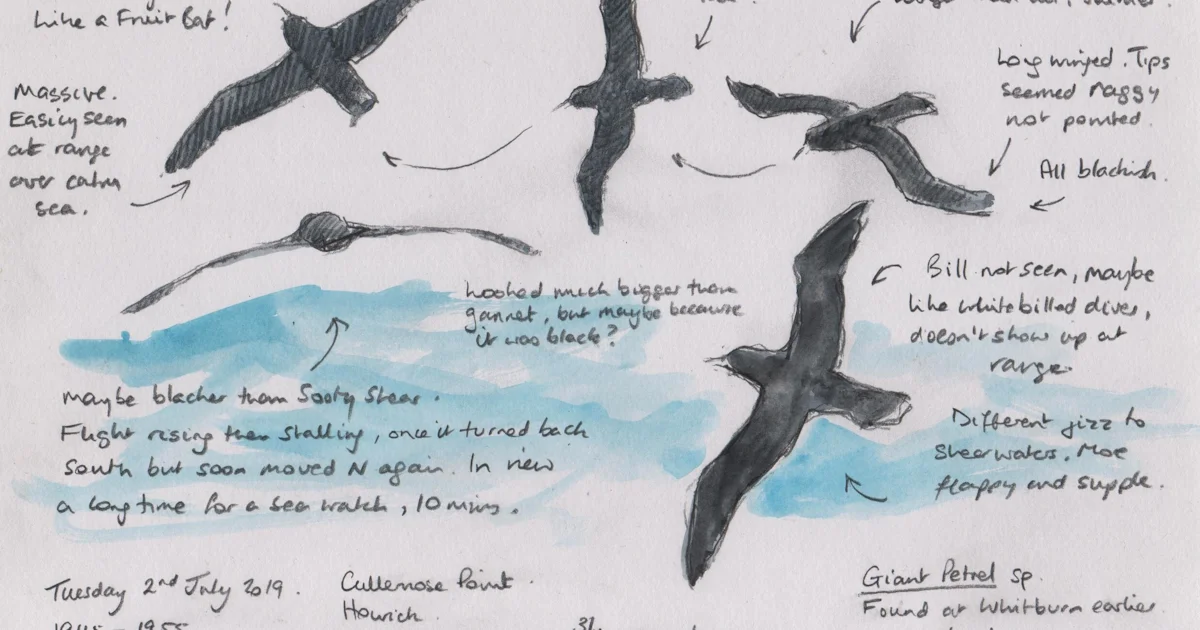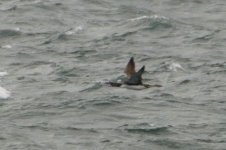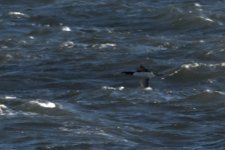This isn't an easy question, as evidenced by the replies so far!
The key problem is when seawatching you are trying to find a moving target often at considerable range (i.e. 1km or more), against a backdrop of a turbulent sea, often with accompanying rain with a strong onshore wind (given the typical conditions likely to move birds close in shore and turn up something worth recording). It is difficult enough to get onto a distant procellarid and follow it with a 'scope, let alone aim and focus a digiscoping setup or camera and get a usable image or video, amidst the excitement of something rare - so kudos to those who manage it. In a seawatching scenario, it ideally demands a team effort, insofar as you'd need the 'scope viewers to guide the photographer / videographer onto target, and the latter to forego the pleasure of viewing the bird in order to concentrate on getting a usable image (ideally video, as Stephen points out).
If you are seawatching alone then I don't think digiscoping is the answer as you need the full functionality of the 'scope to find the birds in the first place, not least the ability to finely adjust focus (does a terrestrial 'scope which allows you to use the eyepiece for observations whilst recording video exist??). So, you either need a rig like the one Dave was planning, or a camera to hand with a decent reach you can pick up, point and shoot without too much prior thought. Perhaps something like a Sony RX10? Bigger sensor than the average superzoom, apparently good video capability, and small enough to sit in a waterproof bag next to you until needed.










